The speed of innovation in the mobile industry can make it difficult to keep up with the pace of change. This can affect both larger organisations, making it difficult to find truly innovative products and solutions, and smaller companies, which struggle to amplify their ideas to the wider market.
The GSMA Foundry serves as a central point within the industry, nurturing, partnering, and showcasing the most commercially or socially promising ideas on the market. At MWC Barcelona, the GSMA Foundry exhibited a selection of demonstrations inside the event’s GSMA Pavilion.

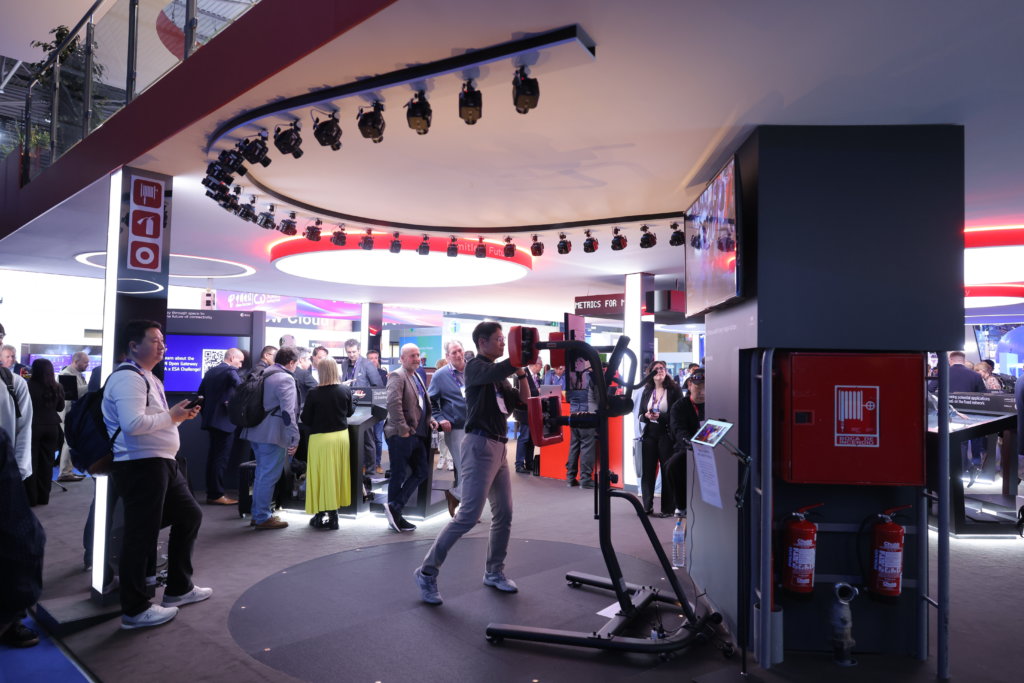
A Journey Through Space to Experience the Future of Connectivity (European Space Agency)
The objective of the European Space Agency (ESA) is using space for the collective benefit of humanity. This includes helping to improve non-terrestrial communication. In alignment with its mission, ESA is playing a key role in steering the integration of 5G terrestrial and non-terrestrial networks (TN-NTN) and has recently formed a strategic partnership with GSMA to help seamless and ubiquitous global connectivity. As partners of GSMA Foundry, ESA showcased virtual, metaverse tours of their 5G/6G Hub, providing insights into their engineering lab, satcom capabilities, and how the integration of networks can serve key sectors.
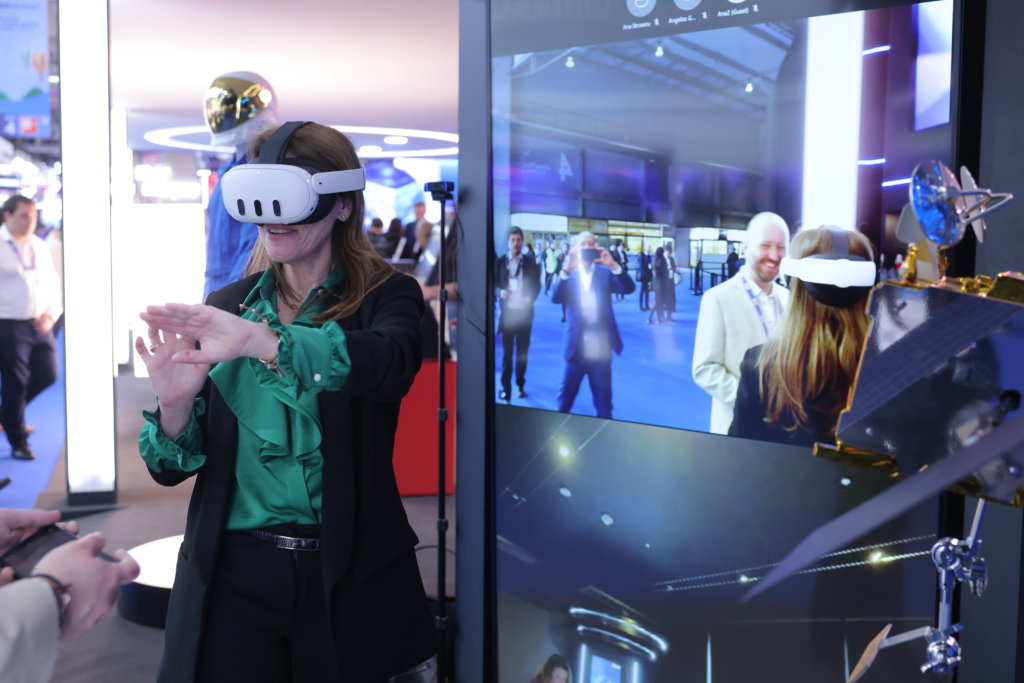

4D Fitness Agility Training (4D Replay and BeWhere)
BeWhere specialises in asset tracking and provides both hardware and software capable of measuring everything from location, lighting, temperature, and humidity. Compatible with a range of functionalities and accompanying cellular technologies, this technology is a key driver in transforming the monitoring of assets and cargo across a range of industries. The company’s 4D fitness trainer demonstration, fitted with the latest 5G Mobile IoT sensors, is an example of how precisely these devices can measure impact and velocity. Being integrated into impact cushions on a punch bag, they transmitted real-time data to an agility meter.
5G New Calling – New Experiences and Capabilities (Huawei)
Huawei’s demonstration of 5G New Calling expands on the fundamentals of VoLTE/VoNR to create fundamentally improved voice and video communication. In essence, New Calling brings a much higher degree of interactivity to calling, allowing users greater ways to express their personality in a variety of ways. Huawei’s New Calling demo showcases applications over a call interface such as real-time, voice-driven avatars, real-time translation, interactive menus, and auto transcription.
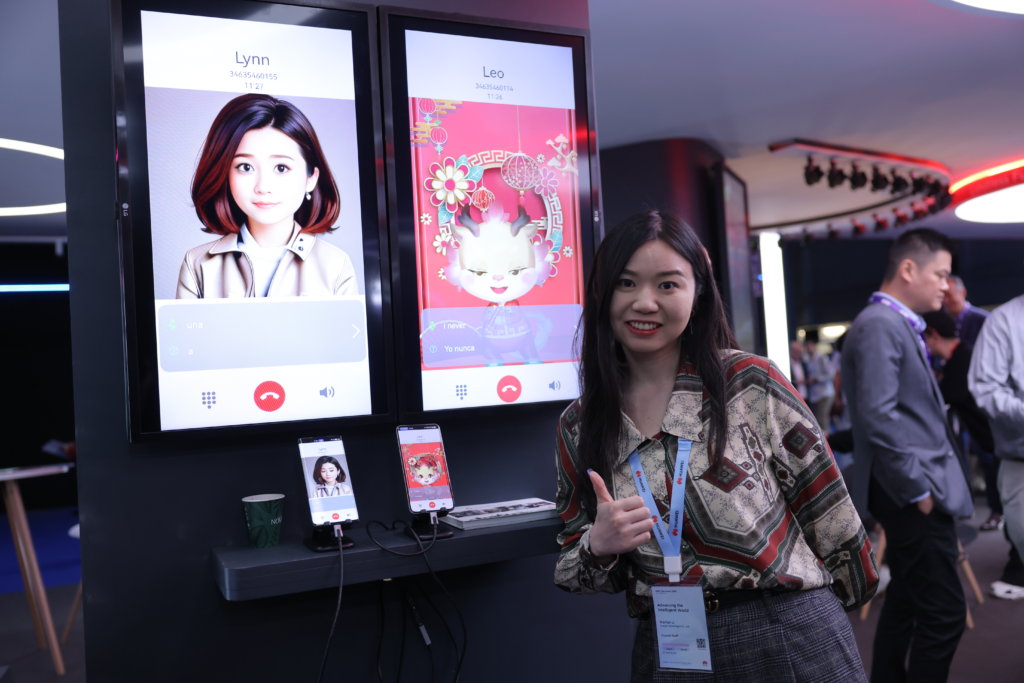

Autonomous Drones with AI (Unmanned Life)
Unmanned Life provides a software platform that orchestrates different types of drones and robots to work as autonomous teams. As robots become more critical to business functions and therefore expand in number, especially due to the value that 5G brings to the ecosystem, organisations will need a reliable orchestration platform to manage and monitor these assets.
At MWC, Unmanned Life demonstrated an autonomous, network-enabled indoor drone flight with AI analytics for person detection on a real-time stream, displayed on a user interface. This represented a smaller scale version of U-Security, Unmanned Life’s product for autonomous drone fleet security operating over 5G networks. U-Security is underpinned by machine vision at the edge, can be deployed on-demand, triggered by events or scheduled for routine patrols, and is already being deployed for multinationals across ports, critical infrastructure facilities, construction sites, and more. The demonstration also featured a simulated activation of the Open Gateways Quality on Demand API, which uses AWS’s marketplace for Telco APIs.
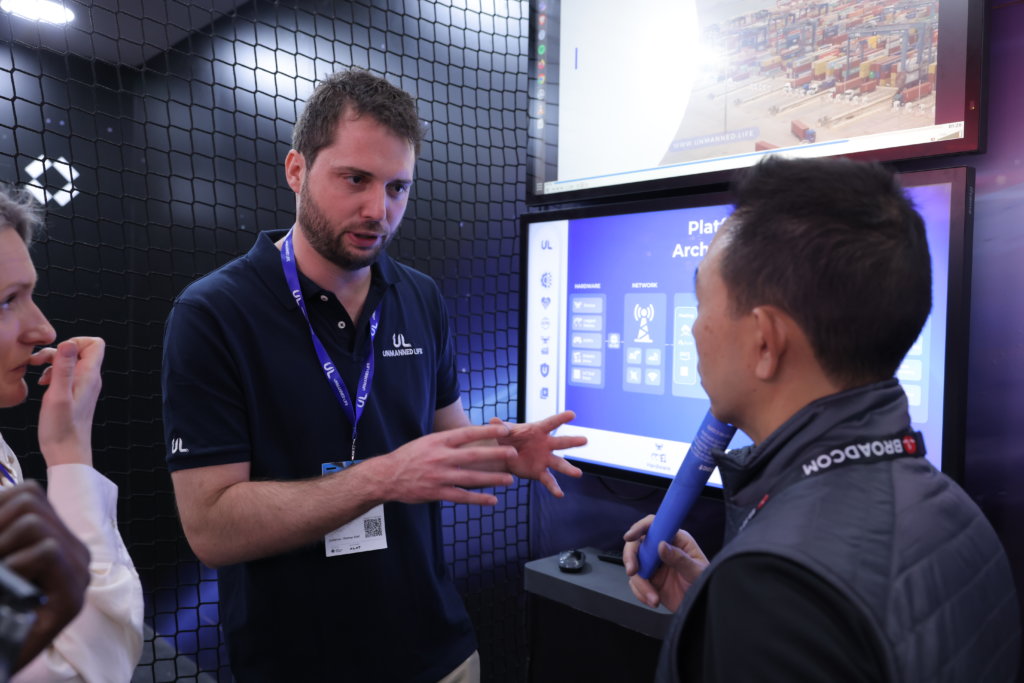
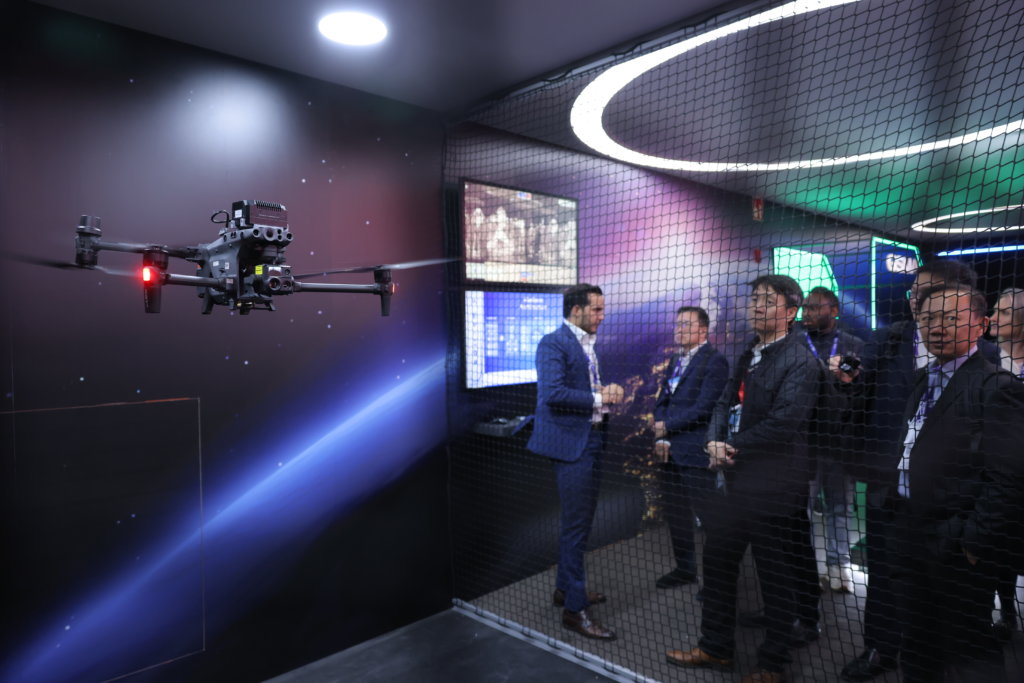
Connecting the Unconnected with Aerostats (World Mobile)
World Mobile’s Aerostats are unpowered balloons provide connectivity to wide areas via a high-speed fibre connection that tethers them to the ground. This simple, practical solution enables widespread coverage at a fraction of the cost of traditional cell towers and has proven to be an effective means of providing ‘last-mile’ connectivity. Last year in Mozambique, World Mobile launched Africa’s first commercial telecommunications aerostat. At this year’s MWC, they showcased the results of how this technology can bring connectivity to rural areas, the feasibility of mounting cellular base stations on aerostats, and heard about the initiatives they are currently launching in the US.
Enterprise use-cases of 5G New Calling (WIT Software)
WIT’s 5G New Calling platform aims to solve a common problem faced by nearly everyone on a daily basis – a lack of faith in voice channels. The premise behind restoring this trust is simple, it involves the know your business (KYB) process which verifies calls with businesses, providing an accompanying UI on handsets to identify callers. The company’s demonstration included verified caller ID, branded calls, in-call campaigns, avatar calling, in-call customer surveys, new calling mini-apps, and digital IVR.
Read the GSMA Foundry Case Study


Cloud Native Private 5G Solutions (CloudRAN.AI)
CloudRAN.AI provides private 5G network solutions designed to seamlessly integrate production processes that achieve industrial digitalisation with ease and efficiency. Their software-driven approach aims to eliminate the need for additional hardware acceleration, ultimately simplifying the deployment of private 5G networks within existing IT infrastructures. At MWC, they demonstrated their solution, engineered for easy deployment, scalability, and ability to support edge services. The solution also provides carrier-grade performance through advanced features such as MU-MIMO and CoMP. The company’s private-5G-as-a-service enables streamlined deployment of mobile connectivity centrally orchestrated from the public cloud. As a managed service, they also provide an API Gateway exposing all designed 5G RAN APIs.
Bridging the AI Adoption Gap (GSMA Foundry & IBM)
The GSMA Foundry and IBM are collaborating to support the adoption and skills of generative artificial intelligence (AI) in the telecom industry, including a new opportunity which provides GSMA members with access to IBM’s watsonx. This platform is intended to help telecom industry players explore innovative industry-specific use cases of Generative AI, enabling members to improve cost leadership, revenue growth and enhance customer experience.

